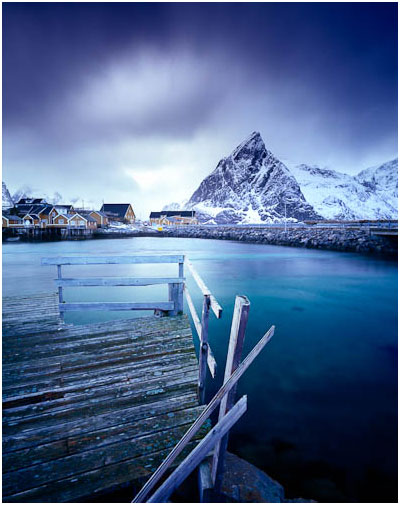I've been reading "Inner Game" by the late Galen Rowell this past week while on holiday on the isle of Islay (highly recommended - island, whisky and of course - the book). Galen touches on so much that is close to my own thoughts at times and because he died in 2002, his book is quite startling at times because he discusses images in ways that only now, we're beginning to understand ourselves.
I would imagine, that you're reading this post waiting for the crunch about that title....
I'm no HDR hater. In fact, I've seen some very well done HDR images on my workshops and it has made me appreciate the technique.
What we often tend to see on the web (because for some reason, crap is always easy to produce), is really badly edited HDR images. You know the ones, where the life and soul of the image has been sucked out of the file beyond recognition and we're left with something that looks more suited to going to Disney whilst already onto your second bottle of whisky (ok, my holiday is still very much in my mind!).
So what does HDR have to do with Galen Rowell's book 'Inner Game'? Well, there's a nice little chapter in there where he discusses why photos look different from life and why they affect us the way they do. To surmise what he said (as far as I understood anyway), he suggests that black areas of an image - the dark, sillouettes or underexposed areas, trigger a very primal emotion in us all. That of danger, or as he likes to suggest - shadows suggest mystery and it's something we've always had to look out for in our existence.
I completely agree. A lot of images with dark areas in them, suggest a sense of mystery to me. Yet, I've met people who are very hung up on not having 'blocked out' areas of a print.
I think that having burned out highlights is a problem, more so than blocked shadows and in many ways, dark areas of images provide depth and a sense of the unknown that we can't help respond to.
In Galen's chapter - I think it was titled 'fixing a shadow', he wonders if we will ever have the technology to 'fix a shadow' so much so, that we lose that sense of Depth. I found this chapter in his book resonated with me because I've seen some deeply poorly edited images in HDR where there *are* no shadows.
The images in question feel as though they lack depth, although technically perfect. Yes, it's great that we can see into the shadows in some HDR images and know what's there, but surely, it's more interesting to *not* know? And maybe more importantly, it's more believable to not know too?
Surely, we need that unanswerable question to 'what is really in the shadows?', in order to make an image / scene more believable?
Galen died in a plane crash well before the digital revolution took off. I can't help wondering what he would have made of the HDR images out there where there is no *depth* to the shadows?
So I finish of this post with a warning. I am no HDR hater as I said. I think that the technology when used skilfully is incredibly seductive.
If there's an element of me having an issue with anything, it's to do with how we interpret our photographs.
Don't suck out the shadows because you think you need detail in there. I don't think we do. I love images that are dark (my own work is often like that).
I think that having deep shadows in life, gives our lives added dimensionality.
Shadows are perhaps, the areas in which we dream.


